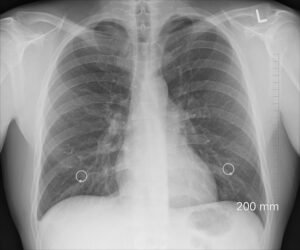Introduction
I have previously discussed in few articles how to find reason of your pains. Prior to reading this article on ankylosing spondylitis diagnosis, you can start with these 2 articles “some of my joint hurt, what do I have?” then go to ones after it. Some health care providers confuse spondylosis with ankylosing spondylitis and I explained in the article ““Language lesson with spinal osteoarthritis, degenerative disk joint disease, facet arthropathy, spondylosis, DISH, and ankylosing spondylitis”. Let us know specifically talk about ankylosing spondylitis if you are sure of the diagnosis after reading the above articles.
HLA B27 and ankylosing spondylitis relationship
Keep in mind that a lot of providers puts excessive emphasis on the HLA B27. The issue with the test that HLA B27 is relatively prevalent in the population compared to ankylosing spondylitis. So positive test, does not mean you have autoimmune disease. It just says, you have higher risk compared to the general population to get autoimmune spine disease “the ankylosing spondylitis” or other issues such as uveitis which is a special type of eye inflammation. On the flip side, I have patients who has ankylosing spondylitis but with normal negative HLA B27. “Ok doc, then what says I have ankylosing spondylitis?”
Imaging and ankylosing spondylitis diagnosis
First and foremost, it is the story. Start with looking at my articles mentioned above and “I have autoimmune arthritis but which kind (lupus, Rheumatoid, psoriatic…etc”. If you think you might have it from reading these articles, then the next step would be X-rays of buttocks joints (sacroiliac) and lower back (lumbar spine). In these x-rays, I look for words in radiologist report saying erosions on sacroiliac joints or syndesmophytes.
The former means bones being eating up from long term inflammation. The latter means the ligaments of the spine calcify and at advanced stages can lead to complete fusion of the vertebral bones (bones of the spine). What if X-rays are normal, could you still have ankylosing spondylitis? Answer is yes. That is why I will talk about Magnetic resonance imaging (MRI)
Advanced imaging for ankylosing spondylitis diagnosis
Magnetic resonance imaging of the lower back and the buttocks joint. Unless you have allergy to contrast or your kidney function is abnormal, I almost always recommend it with and without contrast. Ok, I admit it. I threw at you a slew of medical words. Forgive me. Let me explain. Magnetic resonance imaging is a form of taking pictures of your insides by measuring the magnetic movement of your cells (the basic structure of biology). It is usually a tube-like machine that you lay down on a bed and the bed takes you inside the tube. This kind of tests sees soft tissue like cartilage more than it sees bone structures.
Computed Tomography (CT) scan see the bone better. MRI does not involve radiation like x-rays and CT does. So, what is the idea of contrast? Contrast is a chemical that lights up areas that has more cell activity from inflammation. Why then do the test on 2 stages: contrast and no contrast. This is a very subjective answer as when I talked to several radiologist who specializes in musculoskeletal imaging (pictures of joints), they noted that you can miss early disease unless you do 2 stages. Presence of 2 pictures, one for background and one to compare the inflammation level, leads to more accurate detection.
Announcement: do NOT BE ON TREAMENT OR PREDNISONE when doing the MRI or 4 weeks before, at least, as the prednisone might make the MRI look normal. I have seen patients diagnoses missed as they were given high dose prednisone then sent to do MRI.
Summary
In summary, if you have 2-3 hours limited ability to move the lower back when you wake up or reduced moving ability and you are less than 40 years old, ankylosing spondylitis should be considered. HLA B27 could be icing on the cake. Xray is a good start. MRI is done, when x-rays are normal and your doc still think you have the disease. Keep in mind, MRI might catch other causes of pain too.

Journal of Orthopaedic Surgery and Research




Comments
Pingback: How to manage ankylosing spondylitis effective guidance 4 main categories - Medical Hermit